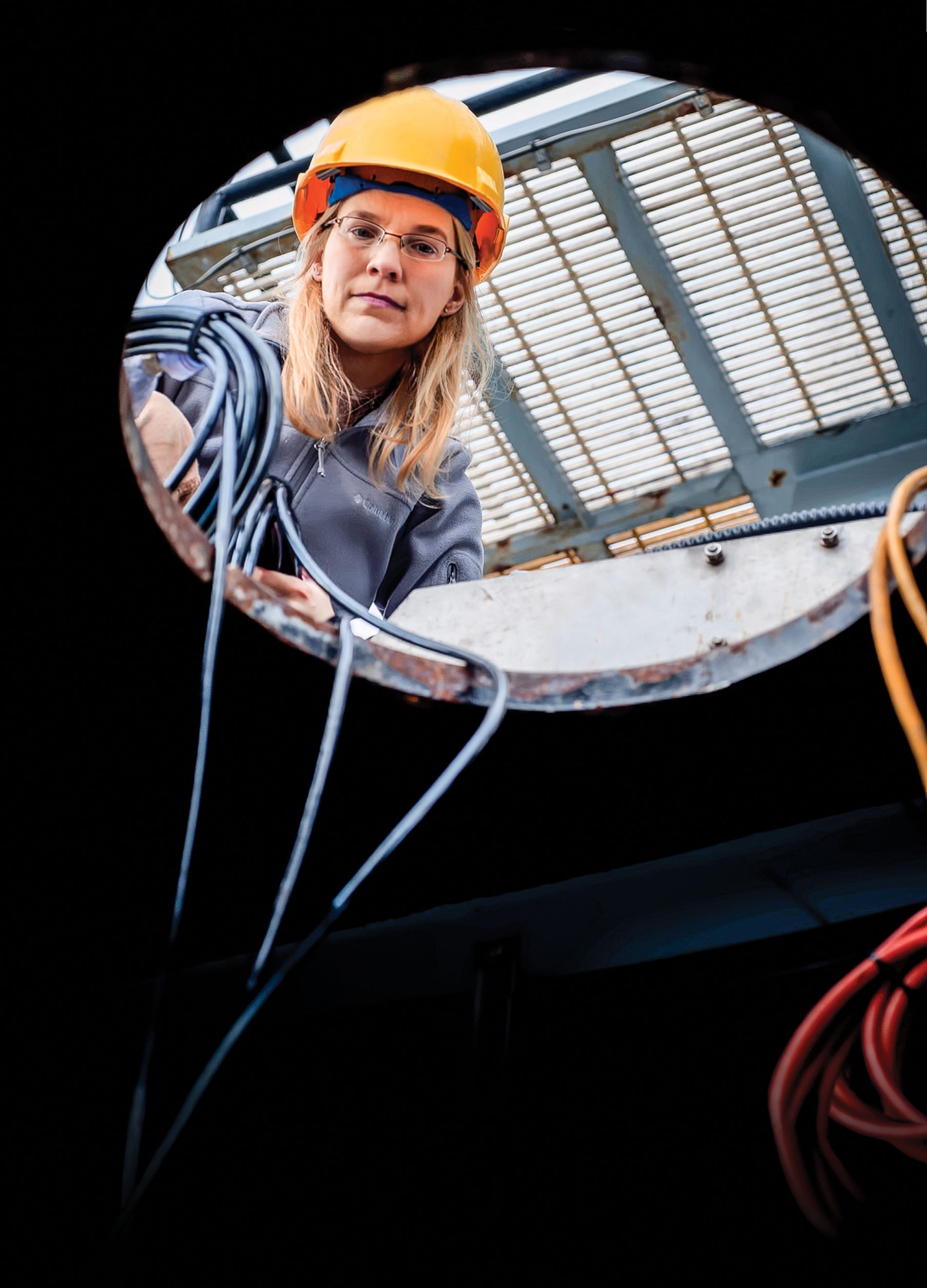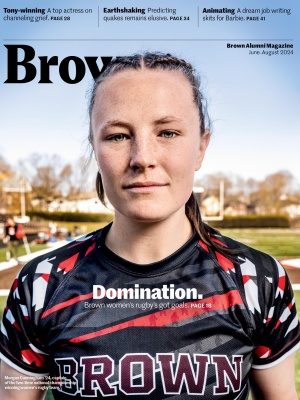Unseen Depths
Research using sonar helps reveal life in a hidden marine world
Thousands of feet below sea level, a robot emits a pulse of sound. The sound wave bounces off craggy rocks on the seafloor, schools of migrating fish, a diving toothed whale, before traveling back to the surface as data points on a computer. Each waveform, every shift in frequency and intensity, paints an otherwise invisible landscape of life in our deep seas.

Senior scientist and science chair at the Monterey Bay Aquarium Research Institute Kelly Benoit-Bird ’98 uses sonar to visualize the hidden animal behaviors of the pelagic world. After being inspired by a fourth-grade trip to an aquarium where she learned how marine mammals “see” through sound, she later devoted herself to the study of biosonar, with her research garnering numerous accolades, among them a prestigious MacArthur Fellowship.
Every day her job as an acoustics ocean ecologist involves sensing our ocean’s depths the way a dolphin might. She describes a world in constant motion where landmarks are nonexistent and plants, instead of large and rooted to the soil, are microscopic and free-floating. “For me it’s always incredible to try to imagine what it would be like to live in the water column,” Benoit-Bird says. “How do animals cope with that world? And how do we break out of our own way of thinking and being tied to a two-dimensional surface?”
While first driven by scientific curiosity, Benoit-Bird researches the oceans in large part to challenge the misconception of the sea as a lifeless, unchanging alien world. “It wasn’t really that long ago that that was the way we saw the ocean,” she says. “That it was boundless, that you could just chuck stuff into it and it would disappear forever, and there was nothing alive down there to worry about.” She considers her research contributions to the American Museum of Natural History’s Unseen Oceans exhibit, which has traveled to other museums, to be one of her most impactful projects. “It’s just such a different audience and a different scale than most scientists ever have,” she says.
Working with expert science writers and visual storytellers to translate her research into other exhibits at the Monterey Bay Aquarium Research Institute and with federal agencies on sustainable ocean management has helped Benoit-Bird reflect on the hows and whys of her research: “One of the best parts of science is collaborating with people who bring a different perspective. A different tool set. A different but related question. I love that. You get pushed in new directions. And having your collaborators challenge you to be better than you would have been by yourself.”





